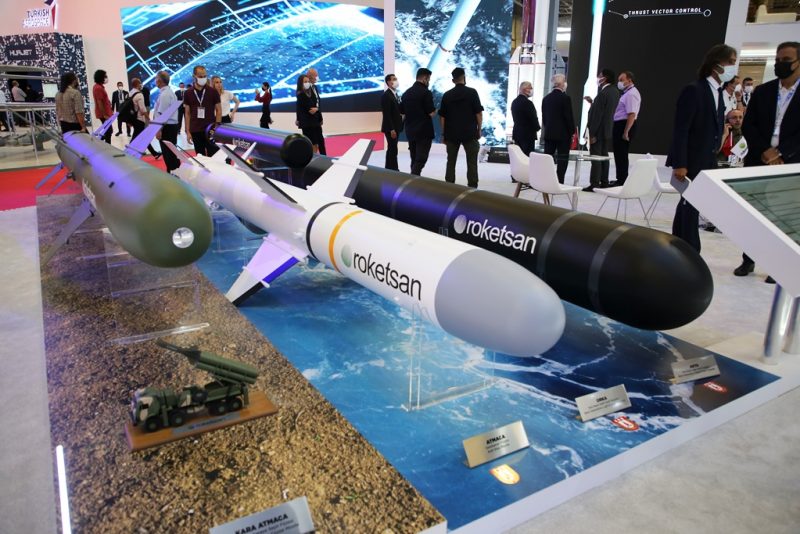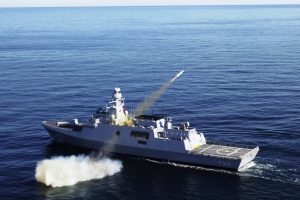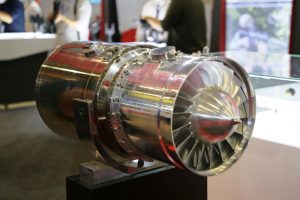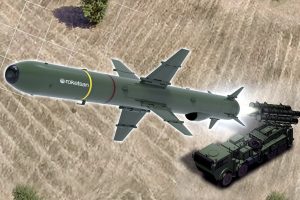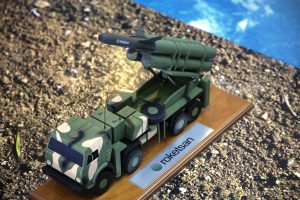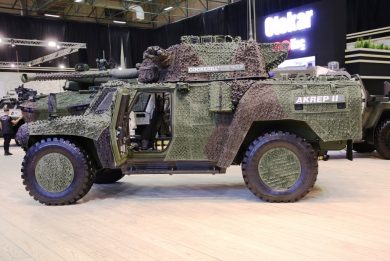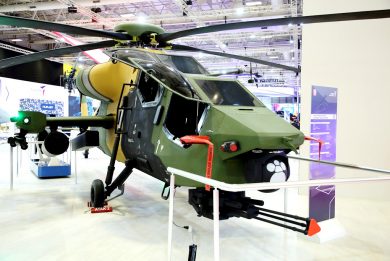Roketsan: the Atmaca missile family grows
By Paolo Valpolini
Among the many big-size mock-up exhibited at the Roketsan stand, two were of products closely linked but aiming at different targets, and with different readiness levels.
In August 2021 the company delivered the first Atmaca anti-ship missile to the Turkish Navy, following the end of the qualification process. A 750 kg system at launch, the Atmaca is 5.2 meters long with the booster (4.3 meters in flight) and has a declared range of 250 km. An all weather weapon hardened against countermeasures, its 220 kg high explosive-fragmentation warhead ensures effective penetration against naval and land targets, no further details being available on its layout. The guidance suite includes inertial and satellite systems as well as a barometric and a radar altimeter, to give it seas-skimming capabilities. In the final attack phase the system activates its RF seeker for maximum accuracy. A data link ensures target update if needed, as well as re-attack or mission abort. A 3-D mission planning allows time-on-target, designated time-on-target, simultaneous time-on-target and salvo modes. The Atmaca can be launched from surface or underwater naval platforms.
The missile is currently powered by Safran TR40 turbojet engine; however since 2014 Turkey decided to develop a national solution, and Kale ARGE developed the KTJ-3200 turbojet that will replace the French engine on the Atmaca in due time, and should then also be integrated into the SOM Cruise Missile, also developed and produced by Roketsan. The KTJ-3200 has a diameter of 300 mm, a length of 720 mm, and provides a standard thrust of 3.2 kN (maximum 3.5 kN). A four-stage axial turboengine, it can be fuelled with JP8 or JP10 jet fuel, can operate at altitudes up to 5,000 meters and speed up to 0.95 Mach.
Leveraging the work done on the Atmaca, in 2019 Roketsan started developing the Kara Atmaca, Land Atmaca in English. The configuration of this surface-to-surface missile is very similar to that of the anti-ship missile, the land version being longer, 6 meters, and heavier, 890 kg at launch, and powered by the same KTJ-3200 that is being adopted for the naval version, although fitted with a bigger fuel tank to increase range. Its navigation package is similar to that of the Almaca, with the addition of a terrain comparison (TERCOM) navigation system that allows flying at low altitude exploiting terrain masking. The Kara Atmaca is fitted with a data link that allows re-targeting while in flight; it can also be used to exploit images taken along the route for intelligence purposes, and last images before impact for battle damage assessment.
Roketsan declares a range of 280 km, but this is quite probably a conservative figure. The warhead is heavier, 250 kg, but is of the same type, although here too no further details are available; the infrared imaging seeker allows to use the missile against mobile and fixed land targets, such as armoured vehicles, strategic land targets, air defence sites, and enemy fixed or self-propelled missile launchers. The 3D planning system is similar to that of the naval version. A model of an 8×8 truck carrying a four-tube launcher was visible beside the missile mock-up. EDR On-Line understood that a similar launcher is being developed to employ the Atmaca naval version in coastal battery configuration. According to Roketsan sources the Kara Atmaca will start launch trials in 2022, and should enter service within three years.
Photos courtesy Roketsan and P. Valpolini

